 Abraham Lincoln
If given the truth, the people can be depended upon to meet any national crisis...
Abraham Lincoln
If given the truth, the people can be depended upon to meet any national crisis...
 Guildford news...
for Guildford people, brought to you by Guildford reporters - Guildford's own news service
Guildford news...
for Guildford people, brought to you by Guildford reporters - Guildford's own news service
Dragon Interview: Local Artist Leaves Her Mark at One of England’s Most Historic Buildings
Published on: 21 Jan, 2023
Updated on: 24 Jan, 2023
By Martin Giles
Have you heard of Mary Branson? You should have done, she is a Guildford artist who has her artwork New Dawn permanently installed in Westminster Hall, one of the UK’s most historic buildings.
Mary, who lives in Sutton Green, is a true Guildfordian who has worked her way up to the position where she was selected as the artist to create a work to celebrate the struggle for women’s suffrage.
Please listen to the interview, skilfully edited by Mark Insoll…
If you would like to see and read more about New Dawn please read on…
Extracts and images from New Dawn, a booklet published by the Parliamentary Curator’s Office.
New Dawn is a contemporary sculpture celebrating the campaign for women’s suffrage (the right to vote). Commissioned by the Speaker’s Advisory Committee on Works of Art in 2015, it resulted from a six-month residency in the Houses of Parliament followed by over a year of design and construction.
The metal and illuminated glass sculpture draws on concepts and imagery connected with Parliament and the votes for women campaign. It celebrates the individuals and organisations involved in the fight for voting equality.
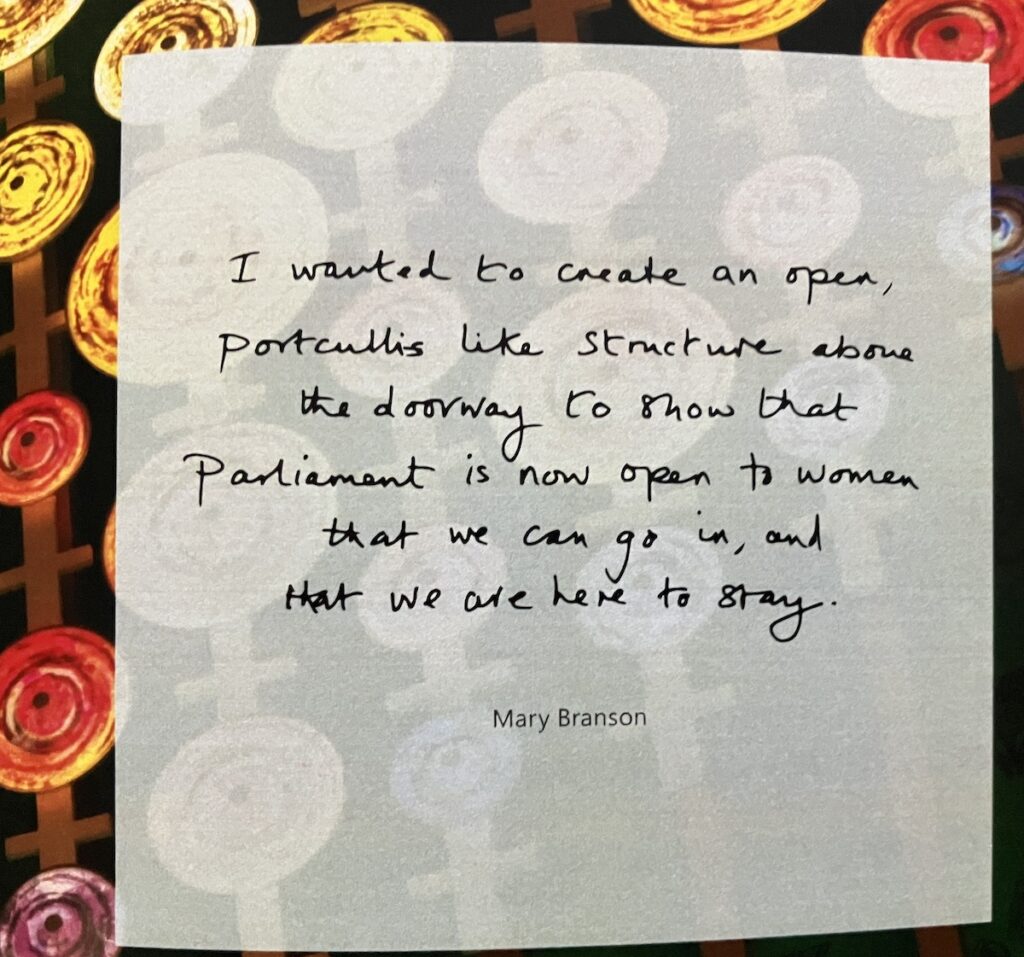 A significant addition to the Parliamentary Art Collection, New Dawn is permanently sited on the main public route through the Palace of Westminster and is seen by the hundreds of thousands of people who visit Parliament each year.
A significant addition to the Parliamentary Art Collection, New Dawn is permanently sited on the main public route through the Palace of Westminster and is seen by the hundreds of thousands of people who visit Parliament each year.
Acts of Parliament are now each recorded in a separate book, but this is a relatively recent innovation, dating only from 1849.
Before then, each Act was written on a parchment roll, which might consist of a single skin, or more frequently of skin sewn to skin, until the roll took on formidable proportions. One of the longest is in fact nearly a quarter of a mile long.
These old rolls are kept in the original Act Room in Victoria Tower and were one of the clear inspirations for the glass discs in the installation.
Mary’s ideas for the artwork that became New Dawn developed during the course of her residency and were finalised in the months afterwards.
Following the successful presentation of her proposal to the Speaker’s Advisory Committee on Works of Art, the commissioning of New Dawn was formally announced on March 5, 2015 at an International Women’s Day event in Parliament.
Charles Barry’s richly decorated Victorian Gothic building made Mary’s search for an appropriate site no easy task. However, the artist kept returning to one location – a large arched compartment in St Stephen’s Porch at the southern end of Westminster Hall. The space had remained empty since construction of the current Palace of Westminster was completed in 1850.
To create the glass scrolls that are so central to New Dawn Mary enlisted the skills of Adam Aaronson from West Horsley. Of varying sizes, 168 unique glass discs were hand-blown and carefully “spun” to flatten them.
To produce the scroll pattern Adam applied powdered glass colours and silver leaf to the molten glass at specific points in the process.
The glass scrolls are lit by a computer-controlled programme created by Mary and linked to tidal monitoring of the Thames.
A continuous series of slow transitions build from the low tide, where only one disc is lit, to high tide where the whole piece is illuminated. Within these transitions, selections of suffrage society colours emerge and then fade with the rhythm of the artwork.
Responses to Dragon Interview: Local Artist Leaves Her Mark at One of England’s Most Historic Buildings
Leave a Comment Cancel reply
Please see our comments policy. All comments are moderated and may take time to appear. Full names, or at least initial and surname, must be given.
Click on cartoon for Dragon story: Public Asked for Views on SCC’s Proposal for Reduced Speed Limits


Recent Articles
- The Royal Surrey Hospital to Open Its Doors to the Public for Community Open Day
- Summary of GBC Planning Decisions – June 18, 2025
- Letter: Reflecting on the Juneja Case Shows the Importance of the Monitoring Officer Role
- New Electric Trains Now Arriving at Guildford – 100 Years After the First One Did
- Woman Pedestrian Dies on A31 After Collision With a Truck
- A281 Closure – Latest Report Says The Street To Be Re-opened
- Road Closed After Lorry Hits Railway Bridge
- The Bishop’s Leap of Faith – From the Top of the Cathedral
- Residents Urged to Have Their Say on the Changing Shape of Surrey’s Local Government
- Driver Given a Suspended Sentence After Head-on Collision With Motorcycle


Recent Comments
- H Trevor Jones on Residents Urged to Have Their Say on the Changing Shape of Surrey’s Local Government
- Alistair Smith on A281 Closure – Latest Report Says The Street To Be Re-opened
- Roland Dunster on GBC’s Plan For a Thriving Guildford ‘Is Our Promise to Residents’ Says Council Leader
- Richard Benson on GBC’s Plan For a Thriving Guildford ‘Is Our Promise to Residents’ Says Council Leader
- Nigel Base on Letter: Recreational Rowing Might Be the Answer
- Anna Windebank on GBC’s Plan For a Thriving Guildford ‘Is Our Promise to Residents’ Says Council Leader
Search in Site
Media Gallery
Dragon Interview: Local Artist Leaves Her Mark At One of England’s Most Historic Buildings
January 21, 2023 / No Comment / Read MoreDragon Interview: Lib Dem Planning Chair: ‘Current Policy Doesn’t Work for Local People’
January 19, 2023 / No Comment / Read MoreA3 Tunnel in Guildford ‘Necessary’ for New Homes, Says Guildford’s MP
January 10, 2023 / No Comment / Read More‘Madness’ for London Road Scheme to Go Ahead Against ‘Huge Opposition’, Says SCC Leader
January 6, 2023 / No Comment / Read MoreCouncillor’s Son Starts Campaign for More Consultation on North Street Plan
December 30, 2022 / No Comment / Read MoreCounty Council Climbs Down Over London Road Works – Further ‘Engagement’ Period Announced
December 14, 2022 / No Comment / Read MoreDragon Interview: GBC Reaction to the Government’s Expected Decision to Relax Housing Targets
December 7, 2022 / No Comment / Read MoreHow Can Our Town Centre Businesses Recover? Watch the Shop Front Debate
May 18, 2020 / No Comment / Read More



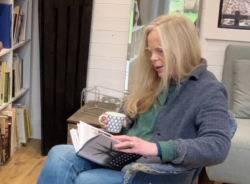
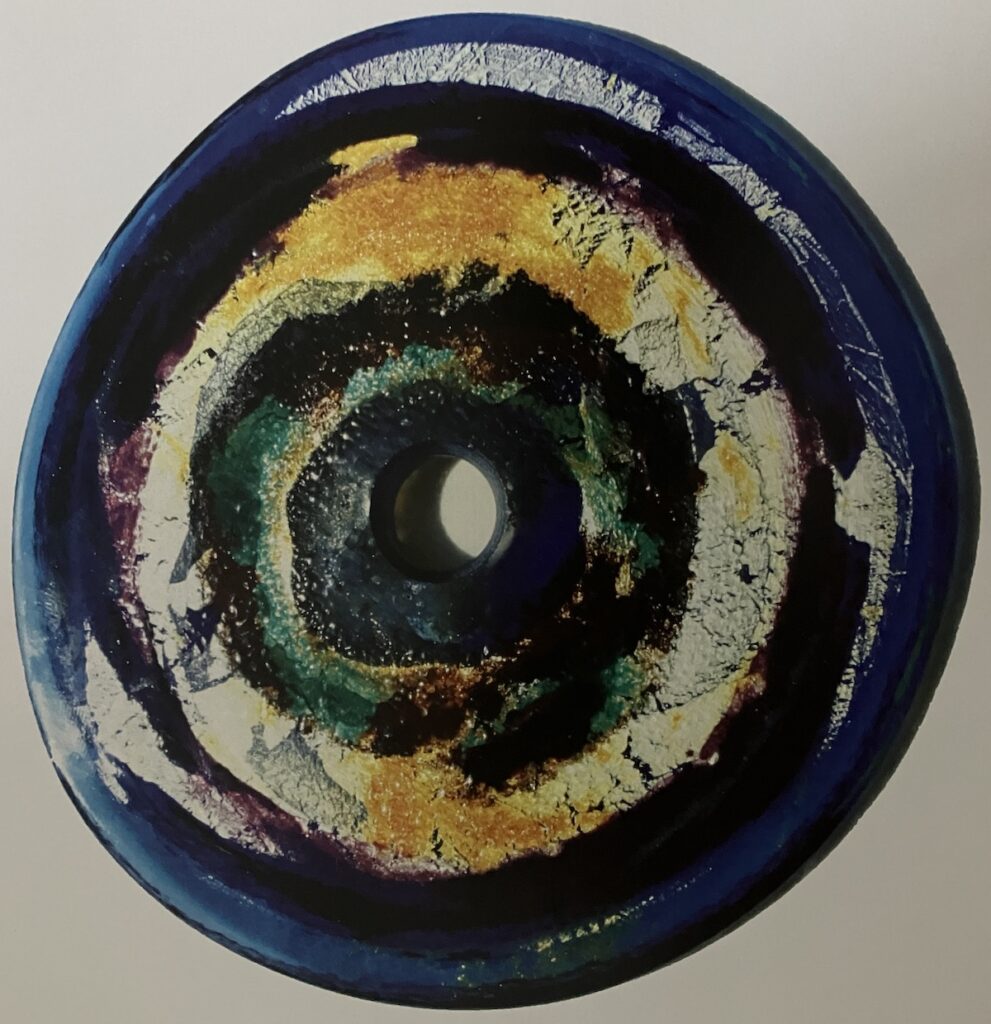

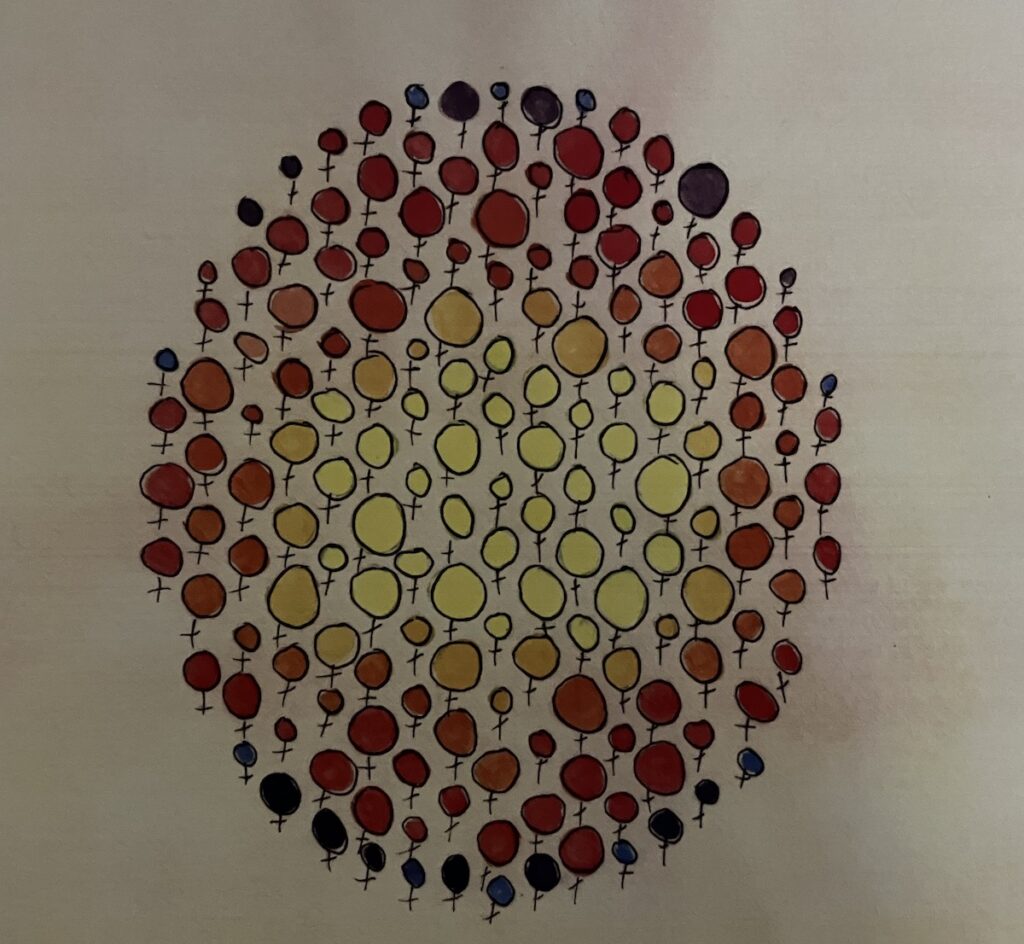
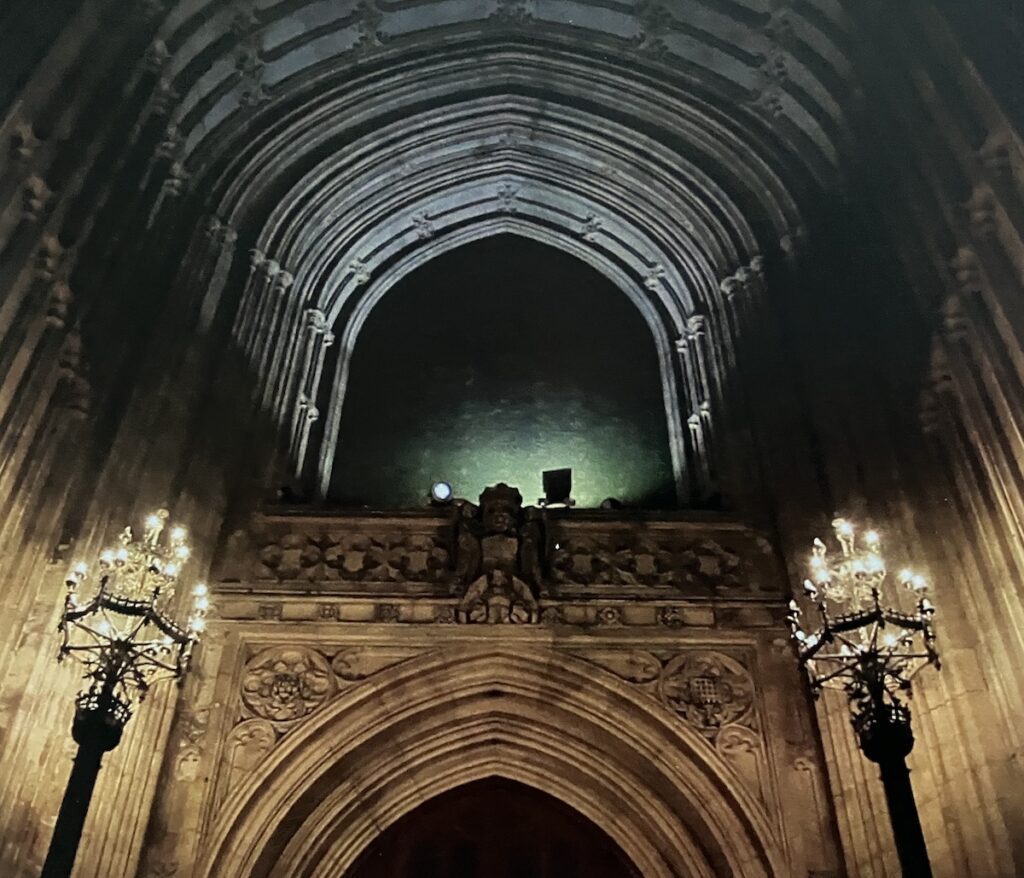

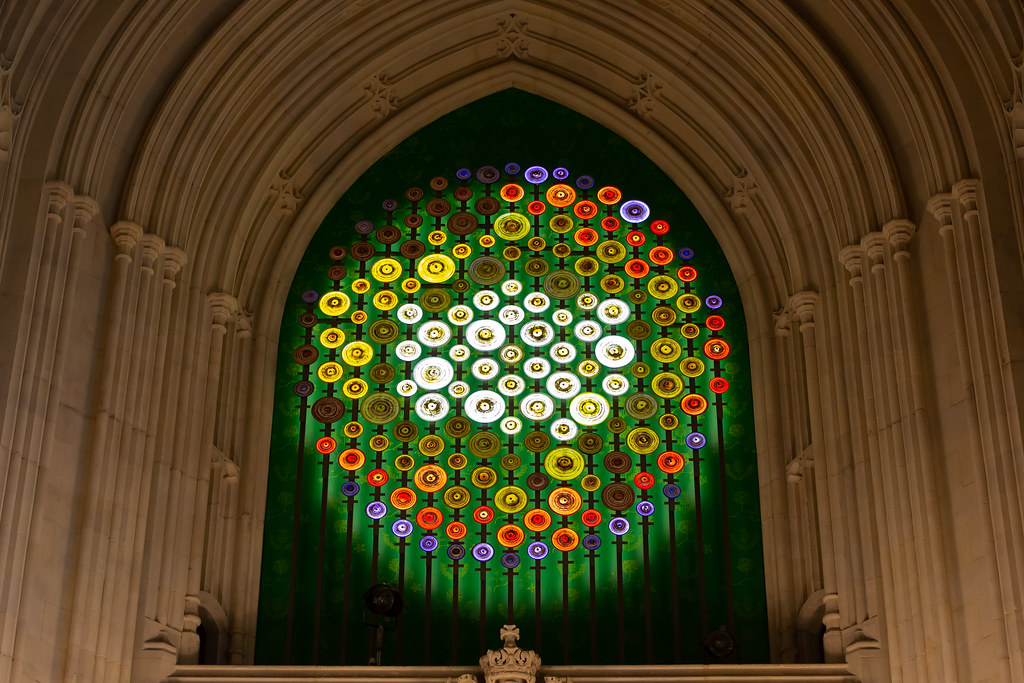



Nicholas Bale
February 6, 2023 at 6:28 pm
Very impressed by Mary Branson and the story of how she became an artist.
Well done Martin Giles for an excellent interview.